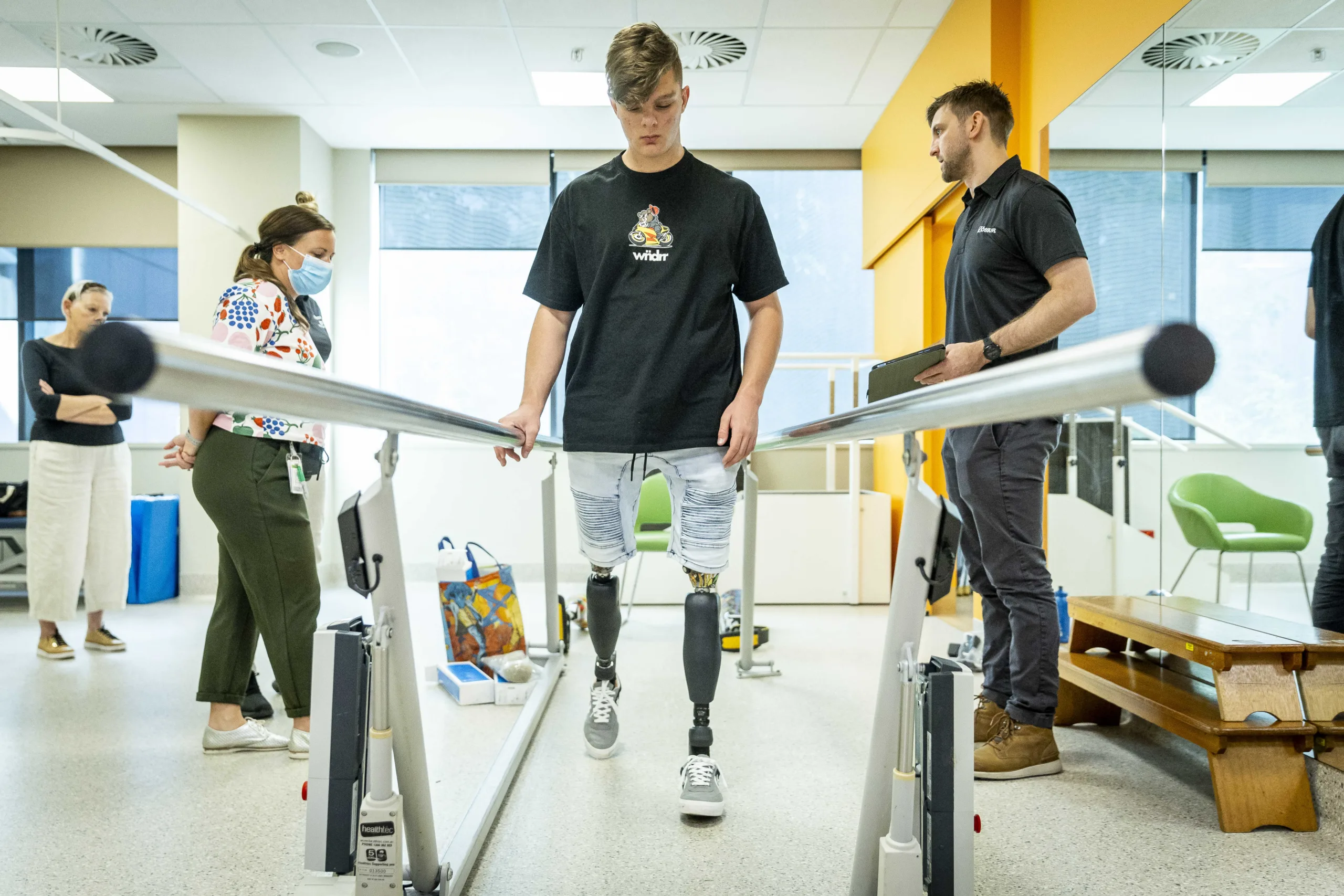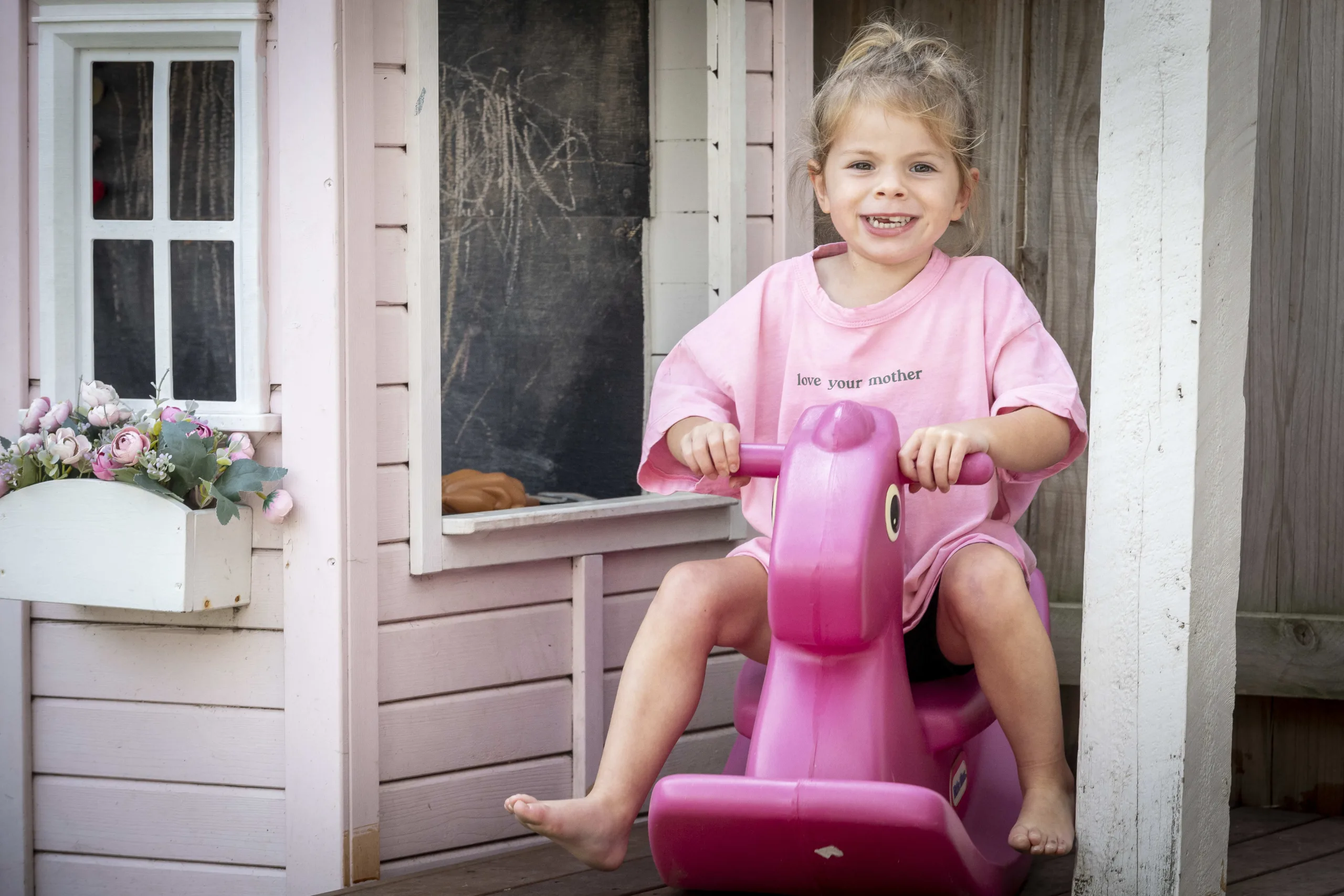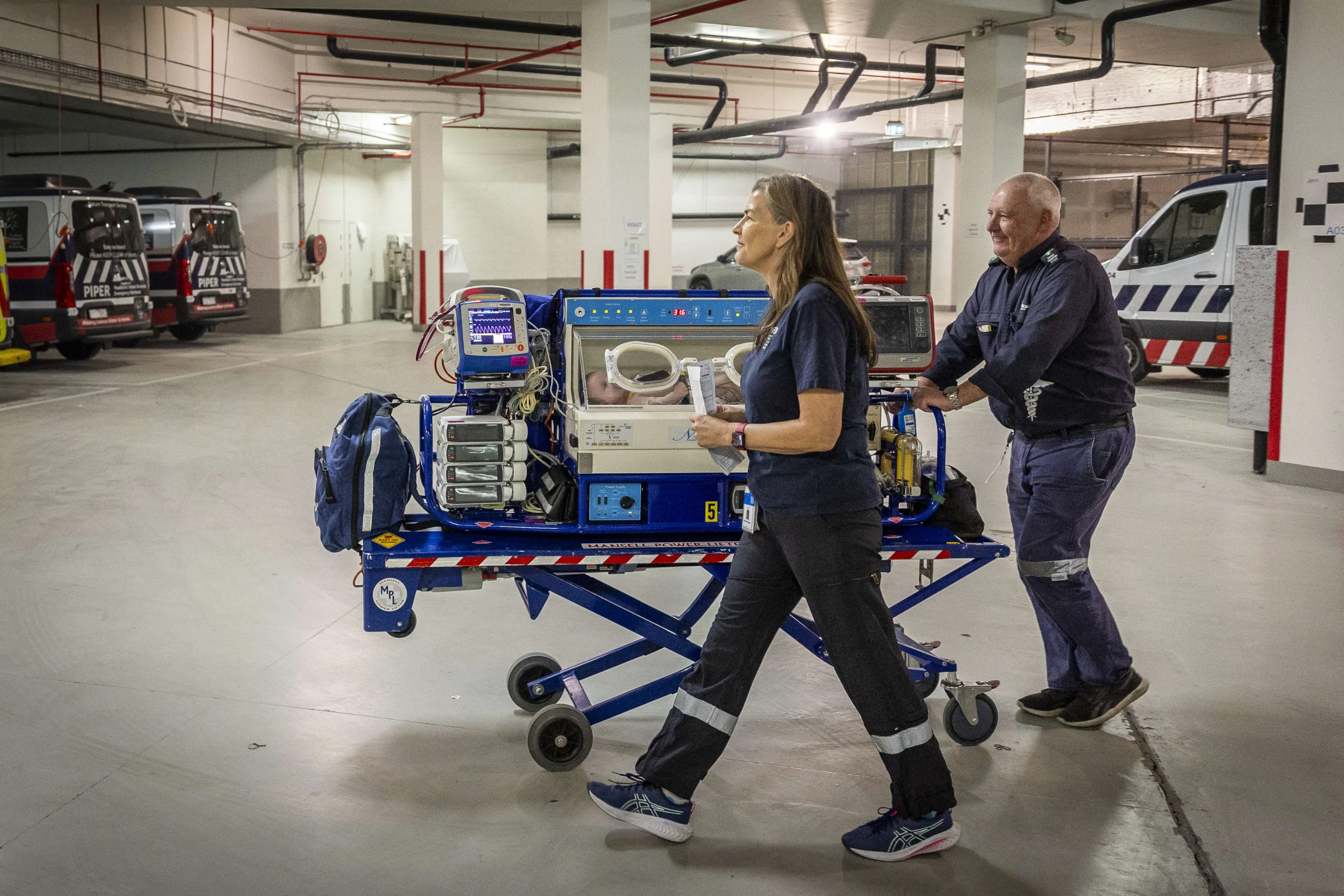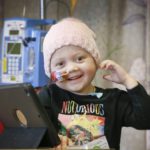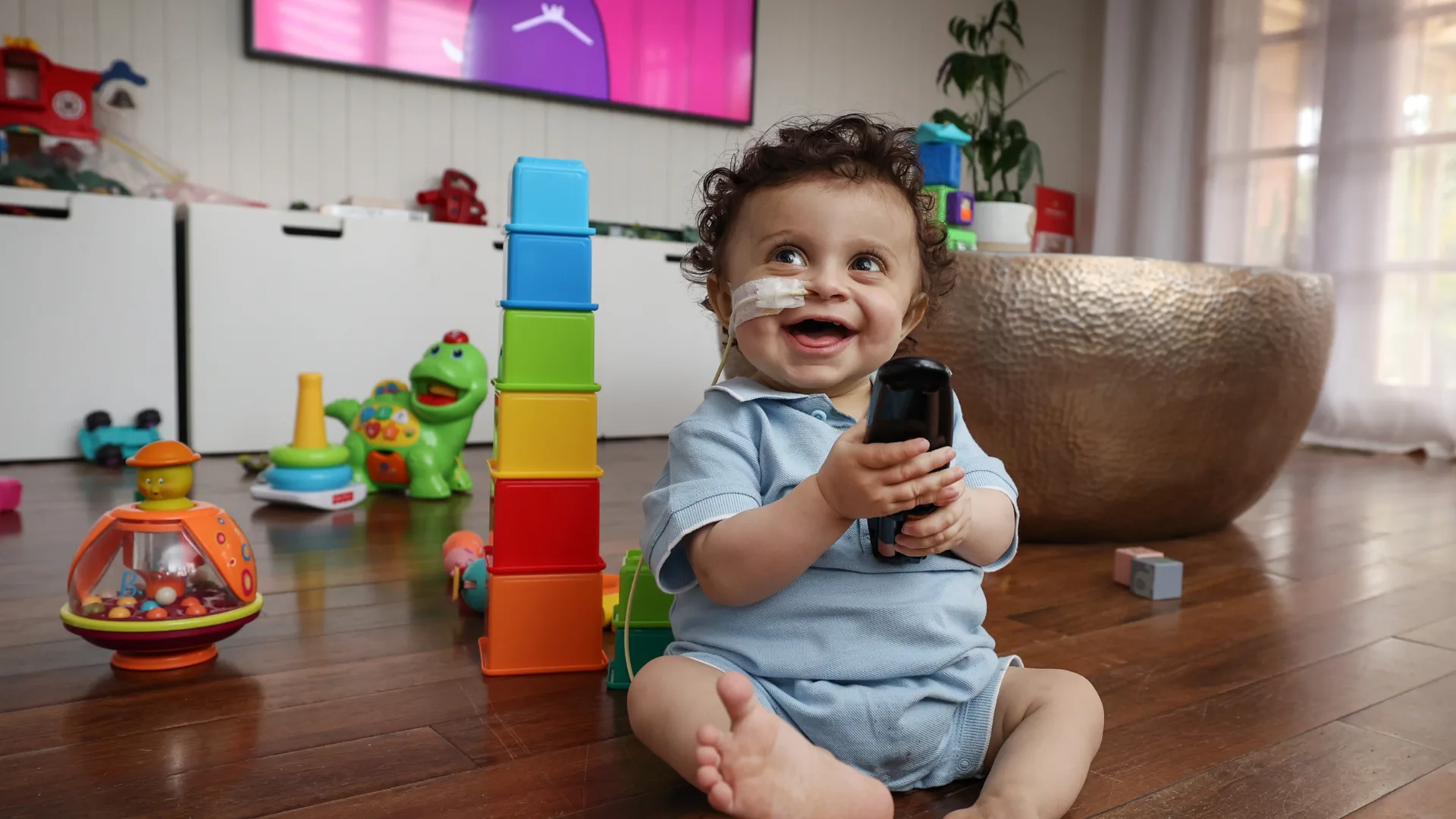
Operation Save Harlen
Cheese, sleeping and Peppa Pig – simple childhood pleasures Harlen is discovering since arriving home from hospital, where he has spent much of his short life after being born with a life-threatening liver condition.
A Melbourne family will be forever grateful to the deceased donor of the liver that saved the life of their toddler son. Little Harlen Busuttil was just 16 months old and facing organ failure without a transplant. He’s now back home – a healthy, cheeky little boy – after brilliant work by the Royal Children’s Hospital team
Cheese, sleeping and Peppa Pig – simple childhood pleasures Harlen Busuttil is discovering since arriving home from hospital, where he has spent much of his short life after being born with a life-threatening liver condition.
“And bum-scooting around the house,” adds Harlen’s mum, Kristy. His dad, Matt, chimes in: “You can’t keep him still now.”
A toddler on the move can be a handful for most parents. For the Busuttils, “it’s a good handful”.
Harlen recently received a liver transplant. The 18-month-old “little battler” had been on the waitlist for a new organ for about five months, with his condition deteriorating to a point where his parents feared he would “go into liver failure and he won’t make it”.
So dire was their situation that Kristy was preparing to donate part of her liver. This would have made her just Australia’s third live liver donor since 2020, according to DonateLife figures. All 289 liver transplants in Australia last year involved deceased donors.
“A donor was found on the Saturday night, and Kristy was all prepped to go into surgery the following Thursday,” Matt says. “The (medical) team didn’t want to push (Harlen’s damaged liver) any further.
“That was quite scary, thinking about that, with our (three) other kids at home, Harlen in hospital, Kristy in hospital.
“It was quite a shock when we got the call on the Saturday night. We had sort of given up, to be honest. So it was pretty emotional.”
Since being diagnosed with biliary atresia at eight weeks old, Harlen has been a regular at Melbourne’s Royal Children’s Hospital.
He was a full-time resident for almost two months leading up to his transplant, after doctors deemed it was “too risky” for him to leave due to the risk of internal bleeding and other complications from liver failure.
Kristy – a Commonwealth Games gold and bronze medallist in taekwondo – and Matt undertook 24-hour alternating shifts at Harlen’s bedside during this time, along with regular visits from their other children, Logan, 12, Scarlet, 8, and Owen, 5.
The family of six finally all slept under the one roof, at their Altona home, in southwest Melbourne, about a month after the transplant.
“It had been about 12 weeks (since that last happened),” Matt says.
“The fact that we’re all at home allows us to get on with life, to get out of this paused existence and get back to a little bit of normal, of just enjoying spending time with each other.”
There was no way Kristy or Matt could have known Harlen would face such a challenging start to life while he was in the womb. Even after birth, the signs of biliary atresia are not overt.
“There’s no way of knowing during the pregnancy – it starts at birth and looks just like any other jaundice,” says pediatric gastroenterologist at the RCH, Dr Mark Safe.
“The difference is that children with biliary atresia have very pale stool, it goes a chalky, white-ish colour. And unlike normal jaundice that gets better as the child gets older, the bile duct, which is the tube that connects the liver to the gut, is scarring and getting completely blocked.
“Without intervention, it’s a fatal condition.”
Harlen was jaundiced from birth and when it didn’t clear up after several weeks, his parents began to worry. His diagnosis came after his eight-week maternal health appointment, when a nurse told a startled Kristy: “He’s completely orange, I think you need to go to the hospital.”
Safe says about six to eight infants a year present with the “uncommon” disease at the RCH. Treatment starts with a Kasai procedure, which aims to get “the liver to be able to drain bile into the intestine”. Safe says about a third of children who have this surgery reach adulthood with their own livers functioning reasonably well. The other two-thirds require a transplant at some stage during childhood.
“And about half of those are like Harlen – the liver never really drains properly and starts to fail quickly, so the transplant needs to be done in the first 18 months of life,” he says.
A deceased donor match was found just in time for Harlen to make this deadline.
Kristy received this news via a phone call on a Saturday night, when she was home by herself and “not expecting it”.
“(The caller) said, ‘I’m from the Austin (hospital), we’ve got a match for Harlen, a really good match’,” Kristy recalls. “I just fell to the floor crying. She’s on the other end going, ‘Don’t cry, you’re going to start making me cry.’
“It was very emotional. The relief just poured out of me.”
Matt adds: “The last 16 to 17 months, we’ve just been so stressed out, seeing him progressively get worse. You feel really helpless. So there’s a lot of relief.”
The next day, Kristy placed Harlen on the operating table at the RCH about 11.30am. He started wailing when she let him go, prompting her to sing his favourite song, Baby Shark, and stroke his face while Matt rubbed his leg to calm him down.
The couple left the theatre once Harlen’s anaesthetic kicked in. “When he goes to sleep, that’s the hardest part,” Kristy says.
Rather than spend the next 10 hours pacing around the hospital, they took their daughter, Scarlet, to a bike shop to pick out a gift for her eighth birthday and went out for a family dinner. Regular updates from the RCH team – who Kristy says “talk us through every moment, making sure we understand what’s going on” – assured them Harlen was doing well.
“He went through the surgery without a hitch,” Kristy says. They were reunited in ICU late into the night.
Graham Starkey, one of Harlen’s surgeons, says his transplant was “reasonably straightforward” – apart from a minor complication that landed the tough toddler back in surgery a few days later to fix a bile duct leak.
“A cirrhotic (damaged) liver is enlarged and almost like a brick – rock hard, stiff, horrible, lumpy – while a healthy liver is soft and pliable,” Starkey, from Austin Health, says. “We’ve got to get in to the back of the old liver and disconnect it from the major blood vessels of the abdomen. It’s very challenging in a child with a big cirrhotic liver because it’s so stiff.
“The liver can be inflamed and end up causing scarring and adhesions to the bowel and surrounding tissue. Also, with liver disease, you get high pressure in the veins (so patients are) prone to bleeding. So getting the liver out can be a bit of a fight.
“But in Harlen’s case, it wasn’t too bad.”
The new liver was transported into the operating theatre in an Esky that was duct-taped shut and filled with ice.
The second half of Harlen’s procedure involved the surgeons “joining up the plumbing” to his new organ. “The veins going out of the liver, called the hepatic veins, are joined up first. Then, a portal vein and an artery that go into the liver, and a bile duct that comes out of the liver,” Starkey says. “Then, you sort out the bleeding and make sure everything’s nice and tidy before you close up.”
About three weeks and a few more ordeals for Harlen later – including the second surgery, and the painful experience of having a fluid drain tube removed – he was finally able to go home.
He arrived back in Altona a different child. For one, the jaundice that had turned his skin and eyes yellow had all but faded.
“He used to get very angry and agitated, particularly in the night-time because he was just so itchy and uncomfortable,” Matt adds. “All of those symptoms have completely disappeared and apart from the odd night here and there, he sleeps really well.
“He’s always wanting something to eat too, that’s a new experience.”
Becoming itchy and irritable is a common symptom of worsening liver failure, due to building toxins in the body that the organ is supposed to be filtering out, Safe says. As is malnutrition – Harlen had “lots of fluid building up in his belly” that often made him too uncomfortable to eat orally.
This meant Harlen needed to be fed through a tube that travelled through his nose, down his throat and into his belly, as well as “directly into his veins” via total parental nutrition or TPN.
A few weeks after his transplant, Harlen starting having formula orally for the first time since he was three months’ old.
Now, his favourite food is cheese, Matt says: “He goes for the expensive stuff, the cheese and biscuits that are pre-packaged.”
He also loves watching Peppa Pig, clapping along to Baby Shark and being with his siblings.
Kristy says Harlen’s siblings were “counting the days until he was coming home” – and since he’s been back, the anxiety they were experiencing also seems to have disappeared. “The only issue we’re having now is that they can’t give him space,” she says. “They’re just so happy he’s home they’re kind of suffocating him with love. It’s pretty cute.”
In hospital, Harlen was always connected to some sort of machine, restricting him to his cot. He now has “free rein” of the house – especially after his parents realised gates they had put up to restrict his bum-scooting were ineffective.
“He worked out how to open them,” Kristy says. “So I got 2kg weights and put 4kg on either end, but he still opened it.”
It only seems fair given Harlen is essentially confined to the house for the next six months.
“We’re in like a Covid bubble at the moment,” Kristy says. “We can take him on a walk, but if anyone comes near him, we have to keep him covered.
“The kids, when they come home, have to change and sanitise their hands. There’s a lot of hand washing to try and keep germs at bay, and we’re keeping the house as clean as possible.
“For a long period of time, if not forever, we will have to be careful of his diet so there’s no bacteria. But once the liver settles and becomes a little bit more robust, he can venture out a bit more and going to kinder will be on the horizon.
“We’ve got some ongoing appointments (that will) eventually wean down, as will his medications. He’s looking really good and has a bright future ahead.”
Kristy and Matt will always be grateful to the RCH team, who became like “family”.
“Every person you meet – it could be the person who cleans the room or brings lunch, the nurses who we kind of miss already, all the way up to the doctors and surgeons – they are beyond amazing,” Kristy says.
“They try to do everything they can to make things easier for you.” Matt adds: “The number of nurses who came in (to Harlen’s room) because they wanted to say ‘bye’ when he was discharged was overwhelming.”
Kristy’s taekwondo school, Jeongsin, will give back via a Good Friday Appeal fundraiser that will see students “kick our way from our Dojang in Maidstone to the hospital on Good Friday”.
The initiative raised $5000 last year.
Starkey describes Harlen’s transplant as “the point end of medicine”.
“It’s a very specialised thing, but if you’ve got a kid with liver failure, this is your only hope,” he says.
“This is a fairly radical operation and you can’t do it without big hospitals (like RCH).
“The surgeons always kind of get the glory, but it’s actually a massive team effort. There are all sorts of people involved that are just as important, including the intensive care teams, the liver medical teams, the nursing teams, pathology and radiology.”
Organ transplantation also wouldn’t happen without selfless families saying “yes” to their loved ones becoming donors, Starkey says.
Almost 1400 people received lifesaving organs from 513 donors in Australia last year, according to DonateLife. Both figures increased annually, by 14 per cent and 13 per cent respectively. But the nation urgently needs more donors, with 1800 people on the waitlist for a transplant at any given time.
The Busuttils hope Harlen’s story spurs more people to register as organ and tissue donors. All Australians aged 16-plus are encouraged to do this, by filling out a short form at donatelife.gov.au or with three taps in the Medicare app. They should then tell their families they want to be a donor in the future.
Kristy and Matt are only just starting to wrap their heads around the generosity of the person whose liver saved Harlen’s life, as well as their family who consented to the donation.
Kristy and Matt will never be able to meet them, but they will write to them, anonymously, to say thank you.
“There’s a family out there who have gone through a horrific experience, they’ve lost someone that they’ve cared for and loved. But through their loss, Harlen has a chance at life,” Matt says. “It’s really hard to get your head around that.”
Written by Jen Kelly
Images by David Caird
Published in the Weekender 23rd March 2024

